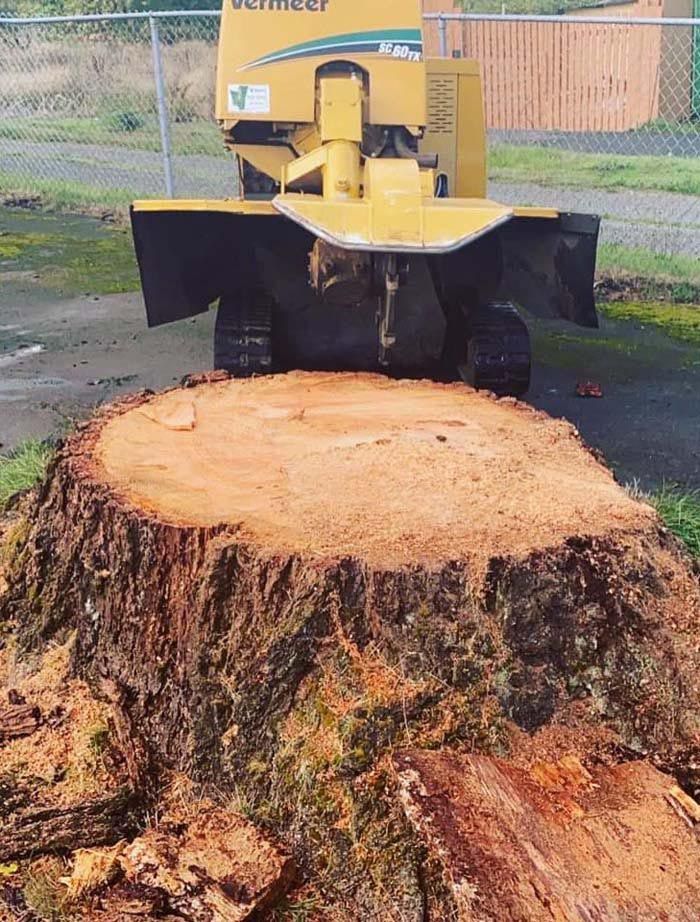Hidden Benefits
Uncover the Hidden Benefits of Tree Stump Removal: What You Need to Know
Removing tree stumps can be a chore, but it has hidden benefits. If you have unsightly tree stumps in your yard, take notice of them: removing them can improve the look and feel of your landscape and provide other benefits like preventing disease and insect infestation. Here are some tips to help you understand the hidden benefits of tree stump removal.

Reasons to leave a tree stump in the ground
What Happens When You Don't Grind or Remove a Stump
Risks of not grinding or removing a stump
When it comes to tree stump removal, many people quickly assume that the best option is to remove the stump entirely. However, there are several reasons why leaving a tree stump in the ground can be beneficial.
First and foremost, leaving a tree stump in the ground can provide additional habitat for wildlife. This is because the tree stump provides animals with an ideal place to hide and rest and a safe environment to build nests and raise their young.
Secondly, if you plan to replant at the same site, leaving the stump can provide extra nutrients for the new tree. The decaying organic matter found in the tree stump will help to enrich the soil, making it easier for the new tree to take root and thrive.
Thirdly, leaving the stump in the ground can help prevent soil erosion and help maintain moisture in the soil. This is because the tree stump acts as a physical barrier, protecting the soil from wind and water erosion. This, in turn, helps to keep the soil healthy and fertile.
Finally, some people choose to leave a tree stump in the ground for sentimental reasons. Removing the tree may be too difficult emotionally, so leaving the stump in the ground can be a way to preserve the memory of the tree.
There are plenty of reasons why leaving a tree stump in the ground can be beneficial. From providing additional wildlife habitat to helping maintain soil health and preserving memories, leaving a tree stump in the ground can be the right choice for many people.
When you don't grind or remove a tree stump, it can have several negative consequences. The roots may still be alive, meaning the stump can begin to grow again. This can be problematic if the tree is invasive or unwanted, as it will start to spread throughout your landscape.
In addition, tree stumps can attract pests such as insects and rodents. These pests can cause damage to your landscape, as they will feed on nearby plants and trees. They can also burrow into the ground, resulting in further damage.
Furthermore, tree stumps can be an obstacle when mowing the lawn or doing other yard work. It can be challenging to maneuver around a stump and may even be a safety hazard.
Finally, tree stumps can be unsightly and detract from the beauty of your landscape. A large, decaying stump is not attractive and can make your garden look messy and unkempt.
For these reasons, it is essential to consider grinding or removing tree stumps from your landscape. Doing so can help protect your landscape from potential damage and make it more aesthetically pleasing.
When it comes to tree stump removal, several risks are associated with not taking the necessary steps to grind or remove a stump. For example, if left untouched, a tree stump and its root system will start to rot and become home to pests, fungi, and other organisms. Additionally, the roots may keep growing, causing damage to your lawn and home's foundation. Furthermore, grinding can attract termites looking to feast on the remaining wood chips.
Failing to remove a tree stump can also be a hazard to both adults and children. If left in your yard, the stump could take up prime real estate better suited for a seating area, a gazebo, or a flower garden. Plus, kids and pets may love to run around your yard and jump over the stump, but they can be just one short leap away from a broken leg.
There are two main options when removing a tree stump: machine and manual removal. Machine removal, like stump grinding, is typically quicker and more efficient, taking about one hour, depending on the stump's size. Hiring a professional to handle this process is crucial, as there may be utility lines around the stump or roots in the ground. Manual removal involves digging up the entire stump and root system, which can be laborious and time-consuming.
Grinding is another option for larger stumps or for when you can't thoroughly remove the stump. This process takes about one hour and involves using a machine to grind the stump down to at least 10 centimeters below ground level and then covering it with soil or new grass. However, this method does not remove the root system and, therefore, won't prevent the regrowth of the tree.
Overall, it is important to consider the risks of not grinding or removing a stump before deciding. To avoid pest problems, damage to your home's foundation, and safety hazards, removing the stump as soon as possible is best.

